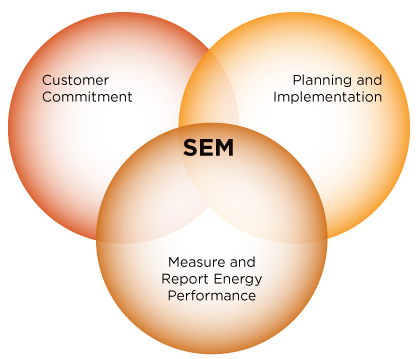


Energy management information systems (EMIS) are transforming the way that energy efficiency programs engage and support industrial businesses. CEE is measuring that transformation, and expanding members’ program tool set.
Energy management information systems are powerful tools to make energy optimization a part of every day business in industrial facilities. EMIS brings together a set of hardware and software components that generate energy information—energy IT—with a framework of practices and people to act on that information to enhance energy performance and build a competitive advantage. A growing number of CEE members are investing in industrial EMIS to achieve deeper, longer lasting energy savings with their industrial customers. The CEE Industrial Strategic Energy Management (SEM) Committee is collecting information about the ways that efficiency programs are using EMIS within an SEM strategy to achieve greater energy savings targets from their large business customers.
Members are sharing information using a structured survey approach about their SEM programs, with a new focus on integration of EMIS. The survey report will address topics including:
Participating members on the CEE Industrial SEM Committee intend to use survey outcomes to reduce risk in EMIS investments and to enhance SEM program outcomes. CEE member organizations that offer an industrial strategic energy management program, are invited to participate and share their experience. Read more about the business of energy management.
About CEE
CEE is an award-winning consortium of efficiency program administrators from the United States and Canada. Members work to unify program approaches across jurisdictions to increase the success of efficiency in markets. By joining forces at CEE, individual electric and gas efficiency programs are able to partner not only with each other, but also with other industries, trade associations, and government agencies. Working together, administrators leverage the effect of their ratepayer funding, exchange information on successful practices and, by doing so, achieve greater energy efficiency for the public good.